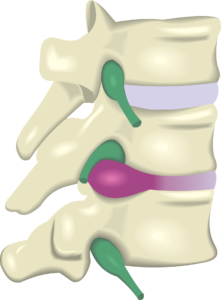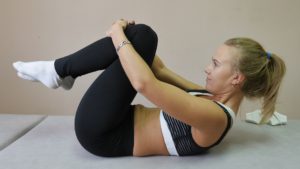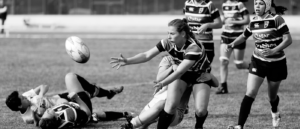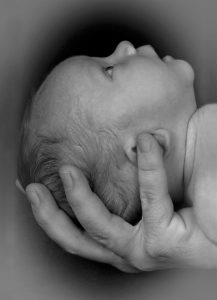Symptoms
People see us for a variety of reasons. Often people come to us with symptoms listed below and then to their surprise mention additional improvements in other areas of their body. Remember that;
- Your body is self healing and regulating,
- Your nervous system communicates all messages around the body (including pain),
- Chiropractors adjust the spine, cranium, organs and extremities with the aim of releasing nervous system tension, improving function and movement.

- Back pain
- Neck pain
- Headaches
- Sciatica
- Disc bulges and injuries
- Arms and legs
- Sports
- Pregnancies
- Kids
- Retirees
- Occupational stress
Back pain
Let’s face it- nobody enjoys pain, yet almost everybody suffers with back pain at one time or another. The evidence is out there; manipulation and exercise are far more effective in helping back problems than pain and anti-inflammatory medication. Back pain may vary from a slight niggling ache to sharp debilitating pain. This can affect many parts of the back and also radiate to other areas of the body (see sciatica). As the saying goes- ‘there is no smoke without fire’, the same could be true about the causes of your back pain. Chiropractors will usually find the specific tissues responsible for the back pain (smoke) but will also dig deeper to work out what sort of stress in your lifestyle is causing the issue (fire). Some causes of stress on your spine include bad posture, poor seating, unsupportive beds and pillows, incorrect lifting, sedentary lifestyle (sitting too much), trauma, sports injuries, pregnancy, “wear and tear” the list goes on. As these stresses build up your spine may adapt or fall into a misaligned position. This causes irritation to the spinal nerves. In the Chiropractic profession these misalignments are called subluxations. Subluxations can cause problems and pains. Chiropractors have a special interest in correcting subluxations, and advise how best to reduce the stressors to keep them from recurring.

Neck pain
The body has a remarkable capacity to compensate for stress and injuries but our spines can only take so much before neck pain results.
Today’s modern lifestyle (in front of screens) is increasingly responsible for many of the problems in the neck and shoulder area. Poor work posture, repetitive tasks, stress and not using full range of motion of the neck can cause subluxations, neck pain, muscle tension in the neck, shoulders and at the base of the skull. A history of accidents, injuries and poor posture can further increase the stress and strain in the neck area and present as neck pain.
These problems may also be associated with frequent headaches or dizziness due to irritation of nerves in the upper neck region.
Headaches
Most people think that because headaches are so common they are normal; this is not true. It is not normal to have regular headaches and although painkillers can offer some relief they do not address the cause of the problem. There are many different causes of headaches but tension headaches account for 80%. They are often associated with our hectic lifestyles and the stresses we put on our body.
Migraines can be debilitating, symptoms include visual and hearing disturbances, sensitivity to light, sound and touch and nausea and vomiting. It is extremely common that headaches and dizziness are related to neck misalignments and stress on the cranium.
There are lots of different causes to headaches. Our chiropractor is trained to deal with the chemical, emotional or physical cause of your headache. If you’ve tried everything to reduce your headaches without success why not call Clarence Valley Chiropractic.
Please note: If your headache problem is not a chiropractic case, you will be referred to the appropriate health care provider.

Sciatica
 The sciatic nerve stems from the spinal nerves in the lower back and runs all the way down the back of the leg and into the foot. Sciatica literally means inflammation to the sciatic nerve which can create pain, weakness or pins and needles down the leg. As such, leg pain doesn’t always mean the cause of the problem is in the leg. Because of the way our nervous system functions, you may for example, have pain in your foot when the problem actually lies in your lower back or sacroiliac joints. A common and often excruciating cause of sciatica may be from disc bulges.
The sciatic nerve stems from the spinal nerves in the lower back and runs all the way down the back of the leg and into the foot. Sciatica literally means inflammation to the sciatic nerve which can create pain, weakness or pins and needles down the leg. As such, leg pain doesn’t always mean the cause of the problem is in the leg. Because of the way our nervous system functions, you may for example, have pain in your foot when the problem actually lies in your lower back or sacroiliac joints. A common and often excruciating cause of sciatica may be from disc bulges.
Disc bulges and injuries
The intervertebral discs are the shock absorbers in between each spinal vertebra. On the outside they are layer upon layer of very tough fibrous material, while the inside remains more gel-like. Technically discs cannot ‘slip’, because of the way they are attached to the vertebra above and below. However, they can tear, bulge, herniate, prolapse, collapse and even rupture.
The physical changes in the disc will cause abnormal function in the joint and can result in local pain. The bulging disc can compress and irritate the spinal cord and nerves and produce very sharp back pain as well as pain in areas distant from the site of the problem. Sciatic pain in the leg is a good example. The radial nerve going down the arm is another.
Arms and legs
People see Clarence Valley Chiropractic for pain patterns in their extremities. Extremities are: toes, feet, ankles legs, knees, hips, fingers, hands, wrists, arms, elbows and shoulders. At Clarence Valley Chiropractic we use dry needling, soft tissue therapy, adjustments, orthotics and specific exercises depending what best suits you.
 Here are some definitions of common symptoms:
Here are some definitions of common symptoms:
- Plantar fascia pain – Plantar fasciitis typically causes a stabbing pain in the bottom of your foot near the heel. The pain is usually the worst with the first few steps after awakening, although it can also be triggered by long periods of standing or rising from sitting.
- Osgood Schlatter – is an inflammation of the area just below the knee where the tendon from the kneecap (patellar tendon) attaches to the shinbone (tibia). Knee pain at the front most often occurs during growth spurts, when bones, muscles, tendons, and other structures are changing rapidly. Pain at the side of the leg is often due to a tight ITB and can contribute to knee pain as well.
- Muscle strains and tears – Varying in grades from 1 to 3 usually due to overuse or overstretching. A misaligned or subluxated joint can cause premature muscle fatigue as seen in A.K studies.
- Ligament sprains and tears – Varying in grades; 1 and 2 are partial and can often respond well to what we do. Grade 3 is complete and a surgical opinion is recommended. An appointment with us will help determine what has happened and what your options are. It has been shown that once you sprain a ligament it is more likely to restrain. Getting the ligament as good as possible could help prevent reoccurrences.
- Tennis elbow and golfers elbow – Pain on the outside of the arm and inside of the arm respectively.
- Shoulder rotator cuff – An overuse injury of one or more of the rotator cuff muscles. People with this issue often feel weak in shoulders or can’t move it in all positions. Having our shoulder rolled back rather than letting them slouch forward is great for our shoulders during exercise.
Sports
Being involved in a variety of sports himself, Dr Adam Penfold realises the importance of sports injury maintenance and correction. When our joints are well aligned better signals get through to our muscles. Chiropractic care promotes healing but may also reduce our chances of injury and tissue damage, which is why many elite teams have their own chiropractor. For example if we have poor alignment and posture through our lower back and pelvis (sometimes called short leg syndrome) this may change the effectiveness or symmetry of the muscle contractions within our hamstrings, groin, quadriceps or hip flexor muscles. This will eventually lead to fatigue, tightness or even complete tearing. Incorrect hip, knee, ankle and feet alignment may also contribute to calf strains, plantar fascitus or ‘shin splints’. The same principle can be applied to the neck posture and shoulder alignment and may contribute to sports injuries and problems like rotator cuff, tennis elbow and wrist problems. All sports injuries are different and you will need a thorough examination to determine if your case may be benefited by Chiropractic intervention.
Chiropractic is different to other professions like physio, so what works for someone may be different to what works for you. However it is extremely important to consider looking deeper to the underlying skeletal structure in order to speed recovery from sports injury and to get the most out of training. Combining massage, physio, yoga/pilates, or hot cold therapy with chiropractic care may give you the extra sporting edge you have been looking for and keep the niggles away.

Pregnancies
Pregnancy, infancy and childhood are times for us to cherish, but they are also periods during which our bodies are placed under a lot of stress.
Before Pregnancy The pelvic bones, ligaments and muscles support the uterus and reproductive organs. Gentle Chiropractic adjustments before pregnancy may help to balance and support your pelvis.
During Pregnancy Sometimes the initial excitement we experience at becoming pregnant starts to lessen by the presence of aches and pains in your back, pelvis or neck. Later in pregnancy, ligaments start to slacken to prepare for the birthing process. A combination of a larger tummy, increased weight, changing posture and softening ligaments can all cause lower back and pelvic instability,as well as misalignments to spinal vertebra and the pelvis. This leads to joint inflammation and nerve irritation. Using muscle releases, gentle manipulation and mobilisations, chiropractic care may help to ease nerve irritation. This allows the body to function better and reduce discomfort.
Post pregnancy As a new mum your body has just gone through an amazingly stressful process. Generally for a quicker recovery, it is very important to be structurally balanced. Many ladies suffering the painful effects of symphysis pubis dysfunction (SPD) or Sacroililitis may gain great relief from chiropractic care post pregnancy. Another reason for young mums seeing us is the pressure on the back and shoulders from either hip carrying or breast feeding. As a general rule, we encourage most of our patients who have become new mothers to be checked and adjusted 6 weeks after their child is born. As always, each case is different so feel free to contact Clarence Valley Chiropractic and discuss what is right for you.

Kids
… and what about the kids?
 Babies As natural as birth is a lot can happen to both mum and baby during birth. Most of the time babies recover fine but sometimes their spine or cranium can be damaged. Dr Adam Penfold has experience in this very gentle paediatric cranial therapy.
Babies As natural as birth is a lot can happen to both mum and baby during birth. Most of the time babies recover fine but sometimes their spine or cranium can be damaged. Dr Adam Penfold has experience in this very gentle paediatric cranial therapy.
Toddlers Often birthing injuries left unchecked can develop into retained neonatal reflexes. These can lead to learning difficulties.
Adolescents As children grow, learn to walk and play sports through childhood and into adolescence they are prone to slips, falls and tumbles. At Clarence Valley Chiropractic we see lots of kids as a result of high activity and bad stretching habits. These days mobile devices add an additional stress to posture. It is often believed that childhood accidents play a role in the problems we experience as adults… “as the twig is bent, so does the tree grow”.
Adam Penfold at Clarence Valley Chiropractic has additional training in gentle cranial therapy and over 9 years experience in paediatric chiropractic adjusting. We have seen many positive health changes in our younger patients. So give your little ones a balanced start to life.
The retirees
How important is it to be able to move well enough to enjoy your retirement? If we don’t use it we lose it! We only have one spine and we ask a lot of it daily so it is not a surprise that many people are limited due to arthritic changes. How does this happen? Imbalance in structure and muscle tension will speed up joint wear and tear according to Wolff’s Law. It is similar to if your car had poor wheel alignment, what would happen to the tyres?
People often talk about wear and tear of the joints. This can also be called arthritis, osteoarthritis, spondylosis, degeneration, spinal decay or degenerative joint disease. There are many forms of arthritis and it can affect people of all ages. However there are many people with arthritis who aren’t in pain so we shouldn’t roll over and succumb to it without trying things first.
The most common form is osteoarthritis, which is inflammation and degeneration of the joints. While chiropractors cannot reverse this, gentle chiropractic adjustments affect muscle tension and joint movement with the goal of getting you out and about and enjoying your hobbies and retirement. Some joints are worse than others so in some circumstances it may be beyond our ability to improve but to do nothing things could worsen quicker than it need be.
If X-rays are required, we can write a referral note to get these done locally. Your chiropractor will go through your images in detail and identify any areas of poor alignment causing increased spinal degeneration or arthritis. We also offer pensioners discounts.

Occupational stress
 Let’s face it, someone in the family usually has to work. Whether you are a builder, tiler, teacher or accountant, most professions place our body under stress. It is very important to somehow reverse the negative forces we place on our bodies daily and this involves staying mobile (cardio, stretches and strengthening), correct diet (fuel and repair), chiropractic adjustments and also adequate rest and relaxation (repair and de-stress). Imagine a book keeper hunched at a computer all day or a brick layer using the same hand and the same posture all day. If these trades do not look after themselves properly eventually something may give, slip, bulge or rupture and this creates crisis care. However if our patients maintain their correct spinal alignment with some chiropractic care and keep practicing a healthy lifestyle, these crisis are usually kept at bay. This is called Chiropractic Wellness Care.
Let’s face it, someone in the family usually has to work. Whether you are a builder, tiler, teacher or accountant, most professions place our body under stress. It is very important to somehow reverse the negative forces we place on our bodies daily and this involves staying mobile (cardio, stretches and strengthening), correct diet (fuel and repair), chiropractic adjustments and also adequate rest and relaxation (repair and de-stress). Imagine a book keeper hunched at a computer all day or a brick layer using the same hand and the same posture all day. If these trades do not look after themselves properly eventually something may give, slip, bulge or rupture and this creates crisis care. However if our patients maintain their correct spinal alignment with some chiropractic care and keep practicing a healthy lifestyle, these crisis are usually kept at bay. This is called Chiropractic Wellness Care.
Where appropriate we can provide treatment to be under work cover.
Contact us today to get started with chiropractic care!
